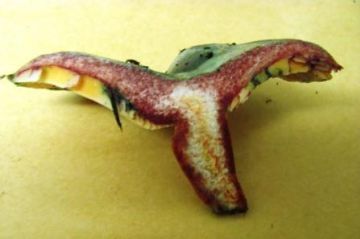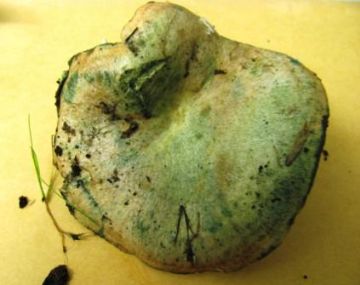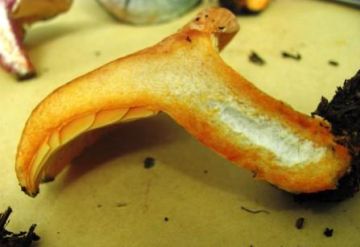September 30th 2010 : This rare species was found growing at two sites at Ingatestone this morning. Two were present, along with Lactarius deliciosus, at Elmfield Farm Pine Plantation (TL647003) which, as its name suggests, is a small Scots Pine plantation, in this instance on the edge of a now defunct farm; while a single example was discovered beneath a Scots Pine outside Spilfeathers, Back Lane (TL643004), which is about 200 yards distant as the spore flies. All three specimens drew attention to themselves by their pale greyish-green caps which, on closer inspection proved to be dotted with grey-green, these forming partial ring zones towards the edge of the cap. The stem was smooth and pale clay-pink in colour while the gills were pink, stained blue-green with age. These characteristics suggested either this species or Lactarius quieticolour, another rare species, associated with pines of acid soils. Semisanguifluus is supposedly found on more calcareous soils but Tony Boniface has found both at nearby Fryerning Churchyard during recent Field Club forays. On returning home it was confirmed as semisanguifluus when the flesh turned dark purple red within fifteen minutes of cutting (see photo) whilst that on quieticolor turns only slowly to yellowish brown and, later, brownish vinaceous and in deliciosus (also illustrated) remains orange for several hours before turning green. The spores, which are ornamented with ridges that fail to form a complete reticulum, are a further distinguishing feature from the other two species.
The Checklist of British & Irish Basidiomycota (2005) lists records from Middlesex, Surrey and Northern Ireland. There are nor records for Essex on the BMS online database, the above records having yet to be entered, but it would appear that this species may be fairly widespread in this area, even though the three sites so far are on fairly acid ground.





















